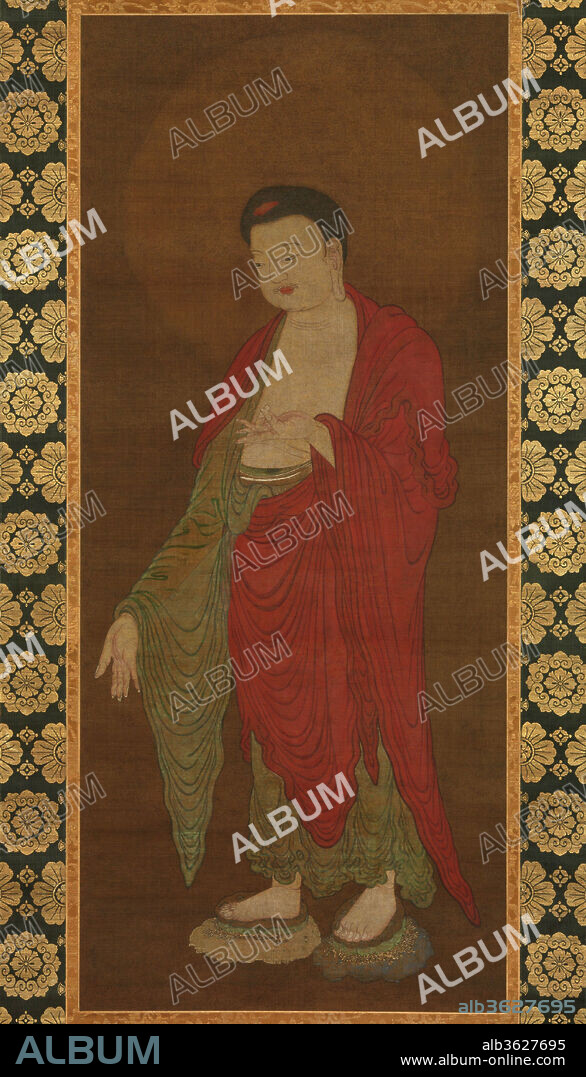alb3627695
UNIDENTIFIED ARTIST, ACTIVE 13TH CENTURY. Buddha Amitabha descending from his Pure Land

|
Add to another lightbox |
|
Add to another lightbox |



Title:
Buddha Amitabha descending from his Pure Land
Caption:
Buddha Amitabha descending from his Pure Land. Artist: Unidentified Artist , active 13th century. Culture: China. Dimensions: Image: 53 1/2 in. × 23 in. (135.9 × 58.4 cm)
Overall with mounting: 95 3/4 × 31 3/4 in. (243.2 × 80.6 cm)
Overall with knobs: 95 3/4 × 33 1/2 in. (243.2 × 85.1 cm). Date: 13th century.
This painting, traditionally ascribed by Japanese scholars to a Song Buddhist painter named Zhang Sigong, represents the Buddha Amitabha (J.: Amida) welcoming souls into his Western Paradise. The drapery of the robe is drawn in the "scudding-cloud and running-water" style, a drapery pattern the Chinese used to recall the Indian origin of the Buddha image.
Infrared reflectography has revealed the following traces of an inscription in the lower left corner: "Qingyuanfu, east of Washing Horse Bridge. . . ." Since the name of the city of Ningbo was changed from Mingzhou to Qingyuanfu in 1195 and to Qingyuanlu in 1277, the painting may be dated to between 1195 and 1277. Stylistically, this work appears to date from the end of the twelfth or the beginning of the thirteenth century: the figure is extremely well drawn, with fine lines firmly describing the splendid face and hands of the image in a fully three-dimensional manner. An almost identical Buddha appears in one of the Daitokuji Five Hundred Luohans paintings, also made in Ningbo and dated 1178.
Technique/material:
Hanging scroll; ink and color on silk
Period:
Southern Song dynasty (1127-1279)
Museum:
Metropolitan Museum of Art, New York, USA
Credit:
Album / Metropolitan Museum of Art, NY
Releases:
Model: No - Property: No
Rights questions?
Rights questions?
Image size:
2517 x 4400 px | 31.7 MB
Print size:
21.3 x 37.3 cm | 8.4 x 14.7 in (300 dpi)
 Pinterest
Pinterest Twitter
Twitter Facebook
Facebook Copy link
Copy link Email
Email

